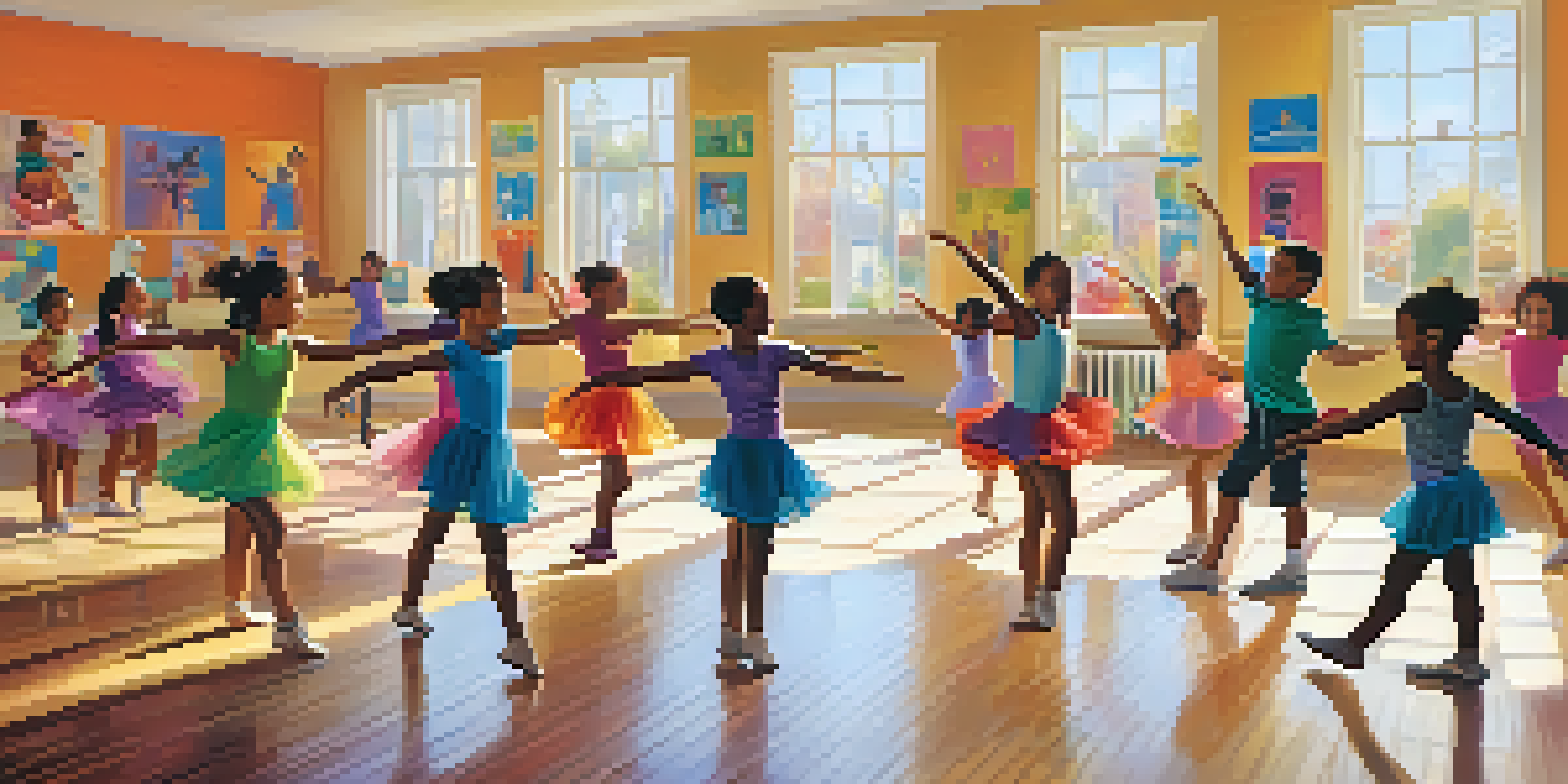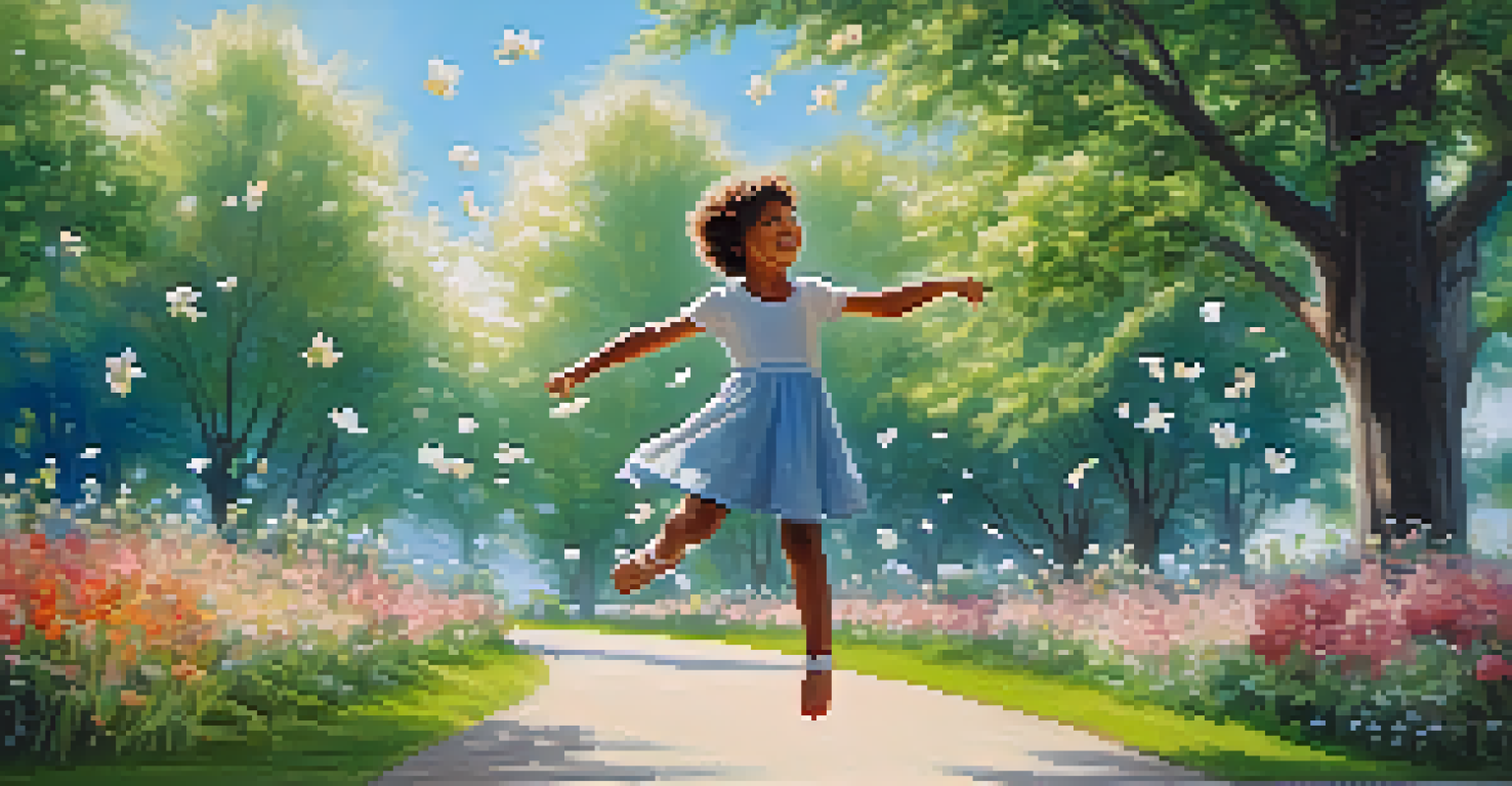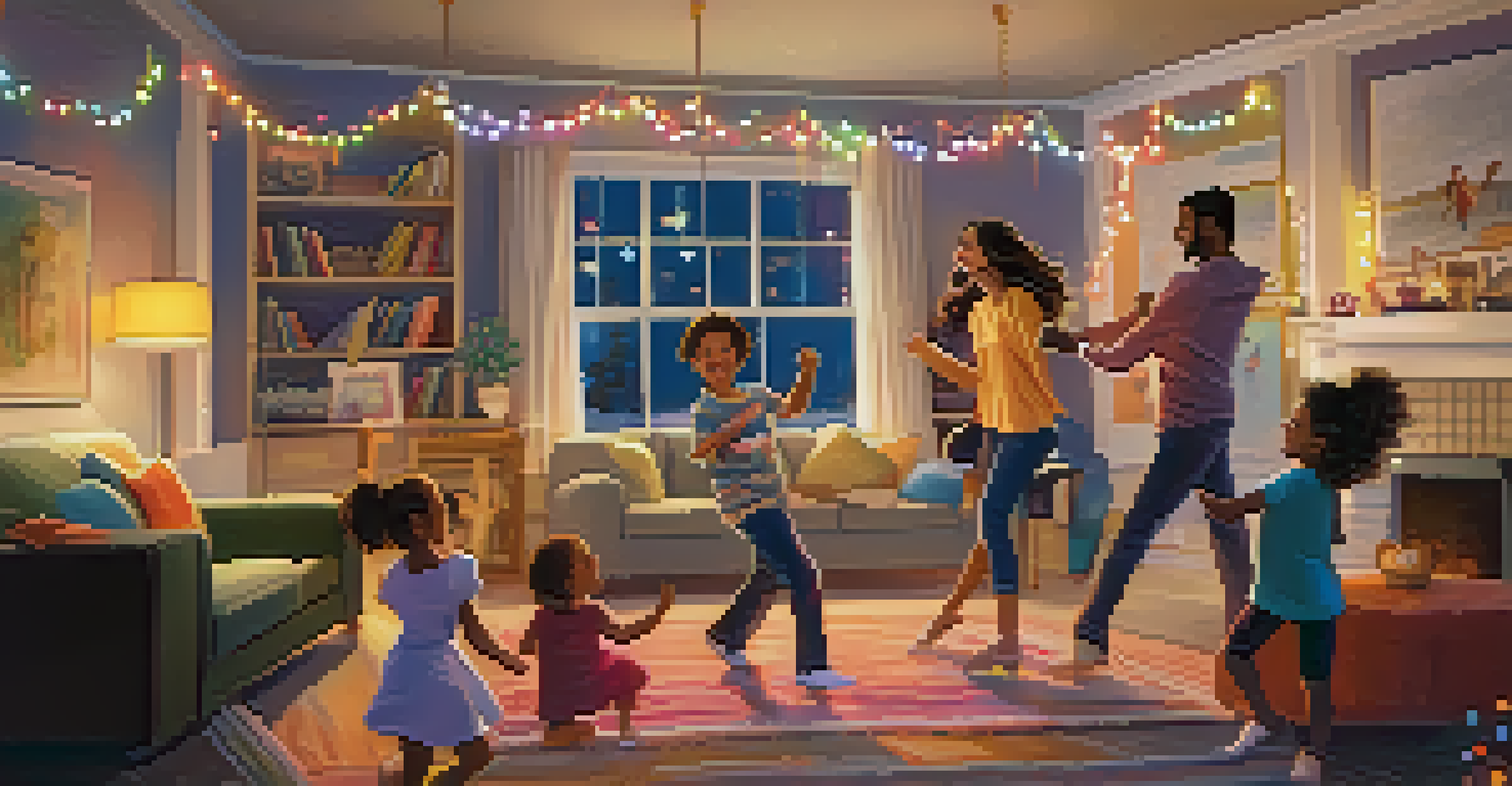How Dance Activities Foster Creativity in Child Play

Understanding the Connection Between Dance and Creativity
Dance is more than just movement; it's a language of expression. When children engage in dance, they tap into their emotions and ideas, allowing them to express themselves in unique ways. This form of creative expression plays a crucial role in developing their imaginative skills, as they learn to convey stories through movement.
Dance is the hidden language of the soul.
Moreover, dance encourages children to think outside the box. Unlike structured play, dance allows for spontaneity and improvisation, giving children the freedom to experiment with different movements and styles. This exploration promotes a mindset that embraces creativity, helping them solve problems in innovative ways.
Ultimately, the connection between dance and creativity is profound. Children who dance regularly often show enhanced abilities in various creative pursuits, from art to writing. By intertwining rhythm and imagination, dance lays a solid foundation for lifelong creative thinking.
The Role of Movement in Enhancing Cognitive Skills
When children dance, they engage both their bodies and minds, which can significantly boost cognitive skills. Movement stimulates brain activity, improving memory, focus, and critical thinking. As they learn dance routines or create their own, they develop the ability to follow sequences and patterns, skills that are transferable to other learning areas.

For instance, learning a dance involves memorizing steps and rhythms, which sharpens a child's ability to retain information. This cognitive engagement is not just beneficial for dance; it also enhances their performance in school subjects, such as math and language arts, where pattern recognition is key.
Dance Enhances Creativity
Engaging in dance allows children to express emotions and ideas, fostering their imaginative skills.
Moreover, as children navigate complex dance movements, they enhance their problem-solving skills. They learn to adapt and modify their movements, fostering a mindset that is resilient and creative in the face of challenges. This dynamic relationship between movement and cognition is essential for holistic development.
Exploring Emotion Through Dance and Play
Dance provides a unique avenue for children to explore and express their emotions. Through movement, they can convey feelings that might be difficult to articulate verbally. This emotional exploration fosters not only self-awareness but also empathy, as children learn to interpret and respond to the emotions of others.
Creativity is intelligence having fun.
For example, a child might use a joyful dance to celebrate a happy moment or a slower movement to express sadness. This process helps them understand the spectrum of human emotions, encouraging them to communicate their feelings more effectively. It’s a powerful tool for emotional intelligence.
As children connect with their emotions through dance, they also develop confidence. The ability to express oneself freely helps to diminish anxiety and promote a sense of belonging. This newfound confidence often spills over into their play, empowering them to take creative risks and engage more deeply with their peers.
Social Interaction and Teamwork in Dance Activities
Engaging in dance activities often involves collaboration and teamwork, vital components of social interaction. When children dance together, they learn to work as a group, sharing ideas and respecting one another's creativity. This collaborative spirit not only enhances their social skills but also inspires collective creativity.
Take, for example, a group dance project where children must choreograph a routine together. They discuss and negotiate different ideas, fostering communication skills and teaching them the value of compromise. This social dynamic enriches their play, allowing them to bounce ideas off one another and create something truly unique.
Movement Boosts Cognitive Skills
Dance stimulates brain activity, improving memory and problem-solving abilities in children.
Ultimately, the friendships formed through dance can also contribute to a child's confidence and creativity. As they bond through shared experiences, children feel more secure in expressing themselves, leading to richer and more imaginative play scenarios.
Cultivating Imagination Through Dance Exploration
Dance is an incredible medium for cultivating imagination in children. When they are encouraged to invent their own dance movements or stories, they engage their creative thinking skills. This imaginative play becomes a canvas for their thoughts and ideas, allowing them to visualize and execute their concepts in motion.
For instance, a simple prompt like 'dance like your favorite animal' can ignite a flurry of imaginative movements. Children may mimic the graceful flow of a swan or the energetic jumps of a kangaroo, exploring both creativity and physicality. This type of imaginative play enhances their ability to think creatively in other contexts as well.
Moreover, this exploration through dance can lead to the creation of unique narratives. As children dance, they often tell stories through their movements, which can inspire them to create characters and plots. This narrative aspect of dance further enriches their imaginative play, making it a multifaceted tool for creativity.
Dance as a Form of Cultural Expression
Dance is inherently linked to culture and tradition, providing children with a rich tapestry of expression. By introducing various dance styles from around the world, children not only learn about different cultures but also gain appreciation for diversity. This exposure broadens their worldview and enhances their creative thinking.
For example, learning a traditional dance can spark curiosity about its origins and significance. This connection to cultural history allows children to weave storytelling into their dance, enhancing their imaginative play. They become not just dancers but also storytellers, connecting with the past while creating new interpretations.
Dance Cultivates Social Skills
Collaborative dance activities promote teamwork and communication, enhancing children's social interactions.
Furthermore, this cultural aspect encourages children to bring their own experiences and backgrounds into their dance. By expressing their individuality within a broader context, they develop a unique creative voice, enriching the overall landscape of their imaginative play.
Encouraging Movement and Dance at Home
To foster creativity through dance, it’s important for parents to encourage movement at home. This can be as simple as playing music and inviting children to dance freely. Creating a vibrant environment where dancing is a regular activity helps to normalize creative expression and makes it an integral part of their lives.
Parents can also participate in dance activities, turning it into a fun family bonding time. Whether it's a spontaneous dance party in the living room or a structured dance class, these shared experiences can boost children's confidence and inspire them to express themselves creatively.

Additionally, incorporating dance into daily routines, such as during playtime or while doing chores, allows children to see movement as a joyful and creative outlet. By fostering an environment that promotes dance, parents can help their children unlock their imaginative potential and enhance their overall creativity.